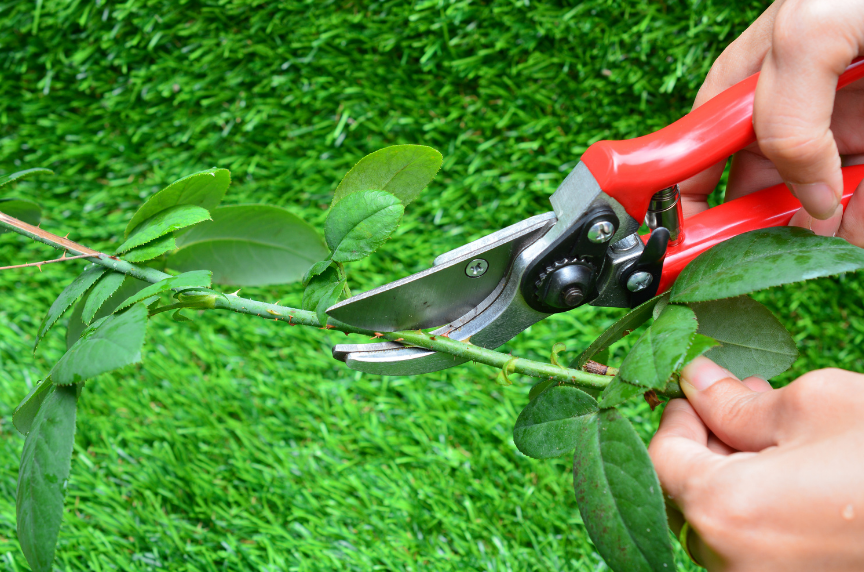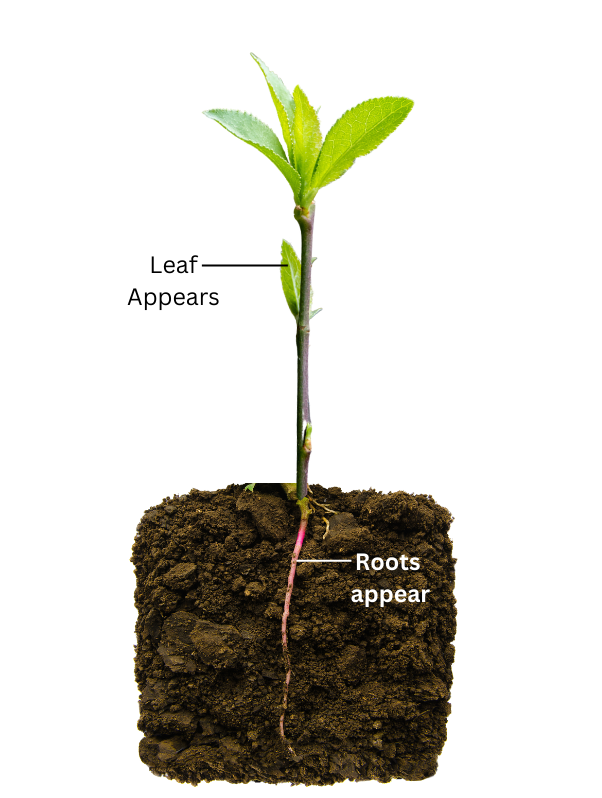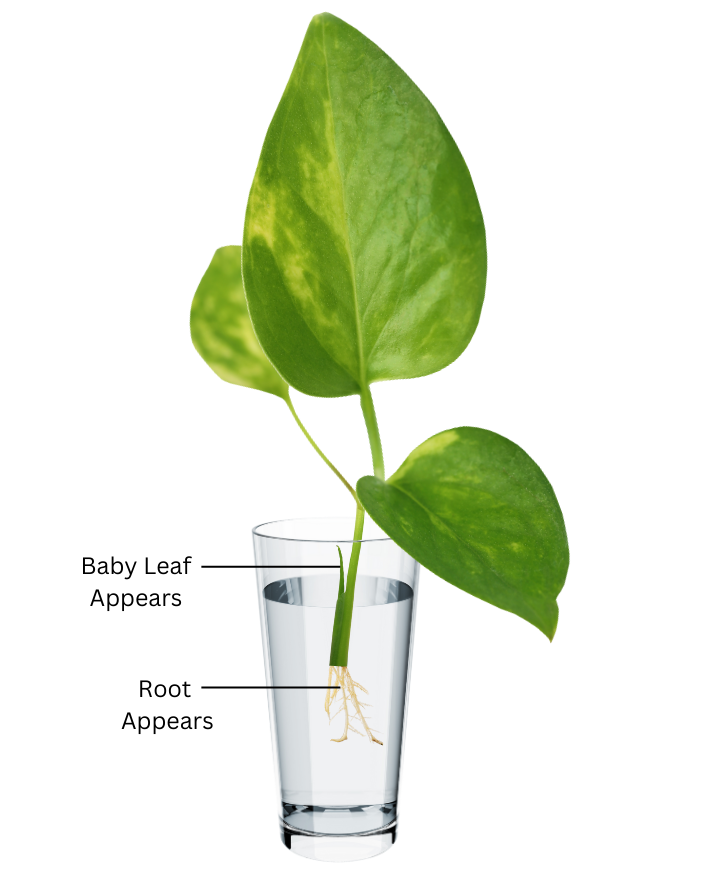1. Complete Activity 8.1 (Page 82). Cut a branch of rose or champa with a node. This piece of branch termed a cutting. Bury the cutting in the soil. A node is a part of the stem/branch at which a leaf arises. Water the cutting every day and observe its growth. Observe and record the number of days taken for roots to come out and new leaves to arise. Try the same activity by growing money plant in a jar of water and record your observations.
Answer:
We carry out the activity using both rose or champa and money plant:
Rose or champa
The Activity 8.1 for rose or champa should be carried out in the following way:
Aim: To observe and record the number of days taken for roots to come out and new leaves to arise from the cutting and make the necessary conclusions.
Materials Required: Rose or champa, scissors, soil, water.
Procedure:
(i) Cut a branch of rose or champa with a pair of scissors as shown in the figure. Make sure the cutting contains a node, which is the part of the stem/branch from which a leaf arises.

(ii) Callous the cut end of the stem/branch by letting it dry for a couple of days before planting it in the soil. This prevents infection and promotes root development.
(iii) Bury the cutting in the soil, water the cutting everyday and observe its growth.

Observation: New leaves and roots should form anywhere between 2 – 8 weeks. You can check by gently pulling the cutting and feel if there is any resistance due to new roots below the soil.
Conclusion: In case of certain plants like rose plant, new plants can be produced asexually using vegetative propagation from the vegetative parts of the parent plant such as stems, branches etc.
Money Plant
The Activity 8.1 for money plant should be carried out in the following way:
Aim: To observe and record the number of days taken for roots to come out and new leaves to arise from the cutting and make the necessary conclusions.
Materials Required: Money plant, scissors, glass, water.
Procedure:
(i) Cut off a stem/branch of a money plant with a pair of scissors as shown in the figure. Make sure the cutting contains a node, which is the part of the stem/branch from which a leaf arises.

(ii) Callous the cut end of the stem by letting it dry for a couple of days before putting it in the glass filled with water. This prevents infection and promotes root development.
(iii) Place the glass in bright but indirect sunlight and change the water regularly.

Observation: You should see new leaves and roots forming between 1 – 2 weeks.
Conclusion: In case of certain plants like money plant, new plants can be produced asexually using vegetative propagation from the vegetative parts of the parent plant such as stems, branches etc.
“Complete Activity 8.1 (Page 82). Cut a branch of rose or champa with a node. This piece of branch termed a cutting. Bury the cutting in the soil. A node is a part of the stem/branch at which a leaf arises. Water the cutting every day and observe its growth. Observe and record the number of days taken for roots to come out and new leaves to arise. Try the same activity by growing money plant in a jar of water and record your observations.” – Solved.
Related Links:
Solution to Extended Learning Problem 1
Solution to Extended Learning Problem 2
Solution to Extended Learning Problem 3
Solution to Extended Learning Problem 4
Solution to Activity 8.1
Solution to Activity 8.2
Solution to Activity 8.3
Solution to Activity 8.4


